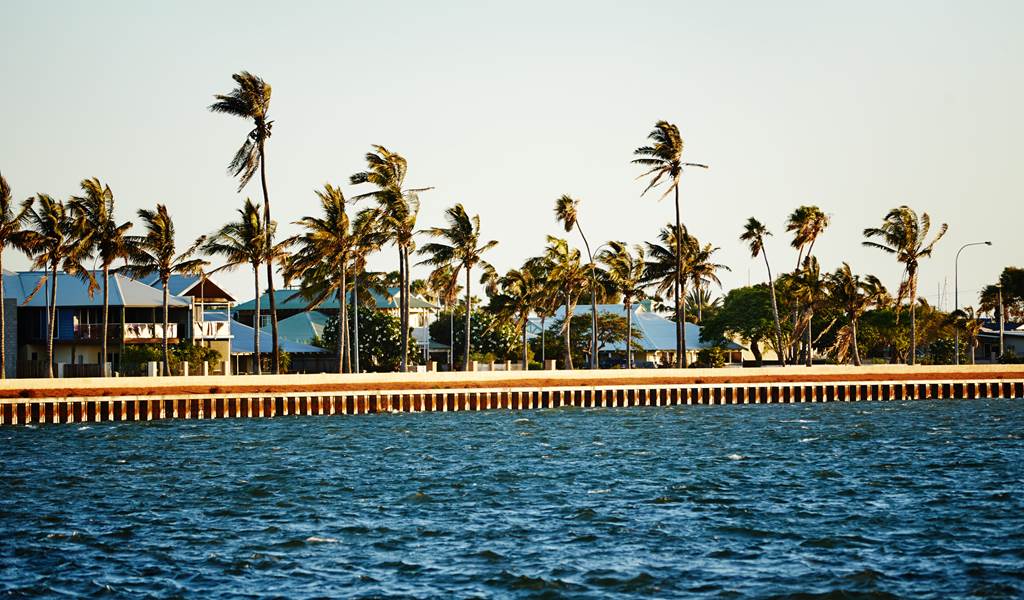
The impact of cloud cover on rooftop solar and how it affects power stations will soon be the subject of an innovative research project in the sun-drenched town of Carnarvon in Western Australia, which has one of the highest levels of solar PV of any regional town in the country.
WA’s energy provider in remote and regional Western Australia, Horizon Power, is in a unique position to lead work of this type as it is vertically-integrated, has advanced meters installed throughout its service area and operates more than 40 microgrids, or isolated power systems - which are the perfect platform upon which to develop and refine the products and services for this new world of energy.
Speaking at the Australian Energy Week conference in Sydney today (21 June), Horizon Power Managing Director Frank Tudor said the Carnarvon Distributed Energy Resource Trial would investigate the social, environmental and efficiency benefits of DER, that is batteries, solar PV and related technologies, on conventional electricity networks.
It is taking place at the same time as the trial of the first utility-scale battery in Western Australia, connected to Carnarvon’s Mungullah power station.
The trial, of the battery, capable of delivering up to two megawatt hours of power, arrived in Carnarvon in March, was commissioned in April and is undergoing some additional work before the 12 month trial officially kicks off.
The battery can provide spinning reserve back up and be used as additional hosting capacity for more renewable energy. Hundreds of thousands of dollars of savings in fuel costs and maintenance costs are expected as a result of the trial because diesel generation will no longer need to be brought on to provide spinning reserve, the battery will.
“This is a significant milestone in our transition to becoming the world’s best microgrid company. We have a clear aim to embrace new technology and drive the increased uptake of distributed energy and the capability of microgrid technology,” Mr Tudor said.
The batteries travelled 5,476 nautical miles across the ocean from China and another 913 kilometres by road from Fremantle before arriving at their Carnarvon destination.
The Carnarvon DER project will assist Horizon Power in developing an advanced model for renewable energy integration for towns that have reached their current available solar Photovoltaic (PV) hosting capacity targets; as well as exploring the most economically efficient ways to design and manage a future grid to reduce dependence on centralised fossil-fuelled generation and reduce carbon emissions.
Mr Tudor said the organisation is embracing innovative solutions to meet the changing demands of customers who are increasingly turning to solar photovoltaic panels as a means of reducing their electricity bills.
The hosting of renewable energy is a challenge for energy utilities all over the world as power stations were not designed to receive energy, but to send it out. The intermittent nature of solar, such as when there is cloud cover, can result in frequency fluctuations which trip a power station and impact the reliability of power supplies of all, those with and without solar.
The management of this issue is critical to the global industry.
Mr Tudor said the fact Horizon Power is vertically integrated, is well endowed with microgrids and had the advanced metering platform meant it could be an innovator in this area.
These features of the business also provide the platform for the piloting of pricing products which had also been acknowledged by the Grattan Institute and Energy Networks Australia as being ground-breaking.
The Power Ahead pilot in Port Hedland, which ran from December last year to the end of March, involved 400 participants and provided financial incentives to customers who could reduce their energy use during peak times. Providing additional generation to cover peak times, used about 2 per cent of the time, add 20 per cent to the cost of generation which electricity users ultimately pay for.
Mr Tudor said the results revealed that residents could make the changes easily, however it is more challenging for businesses which had less ability to respond to mobile phone alerts and require more systemic changes, such as PV and battery systems or changing business routines.
“This is exciting work and will ultimately lead to more control and choice for customers,” Mr Tudor said.
The final report of the Electricity Network Transformation Roadmap released last month by Energy Networks Australia and CSIRO highlights the transformational changes in the Western Australian energy system.
Energy Networks Australia CEO, John Bradley, said more than 40% of Western Australia’s energy is projected to come from renewable sources by 2030.
The report confirms the greatest benefits will be seen in remote parts of the State – Horizon Power’s service area - where the cost of building and maintaining traditional poles and wires is becoming more expensive than alternatives such as stand-alone power systems. Horizon Power has already installed five such systems on customer properties and is in the process of installing to more systems which include solar, battery and back up diesel generation.
For more information, please contact Wendy Pryer on 0409 796 999